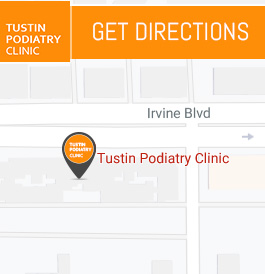4 Questions to Ask Regenerative Medicine Specialist
Regenerative medicine encompasses a range of innovative approaches aimed at restoring, replacing, or regenerating damaged tissues or organs in the body. Regenerative medicine, a rapidly advancing field of medical science, holds immense promise in revolutionizing healthcare by harnessing the body’s natural healing abilities to restore damaged tissues and organs. Visit Dr. Charles Baik, DPM at Tustin Podiatry Clinic today to get specialized and comprehensive care. Contact us today for more information or visit us to book an appointment online. We are conveniently located at 17400 Irvine Blvd. Suite H, Tustin, CA.


Table of Contents:
What is regenerative medicine used for?
What are the types of regenerative medicine?
Who is a good candidate for regenerative medicine?
Does regenerative medicine really work?
Regenerative medicine is a branch of medical science that aims to restore, replace, or regenerate damaged tissues and organs using biological materials, cells, and engineering approaches. It represents a paradigm shift in healthcare, moving away from conventional treatments that merely manage symptoms towards therapies that address the root causes of diseases. The development of regenerative medicine can be traced back to the early 20th century, with advancements in tissue transplantation and organ transplantation. However, it was not until the discovery of stem cells, particularly embryonic stem cells, that the field truly began to flourish. Stem cells possess the remarkable ability to differentiate into various cell types, making them invaluable in tissue regeneration. Key principles and approaches in regenerative medicine include cell therapy, tissue engineering, and biomaterials. Cell therapy involves the transplantation of cells, either from a patient’s own body or from a donor, to replace damaged or diseased cells. Tissue engineering combines cells, scaffolds, and growth factors to create functional tissues or organs in the laboratory. Biomaterials, such as synthetic polymers or natural substances, provide structural support and promote tissue regeneration.
One of the most promising applications of regenerative medicine is in tissue regeneration, particularly in musculoskeletal tissues. Musculoskeletal injuries, such as cartilage and bone damage, are prevalent and often result in chronic pain and disability. Regenerative medicine offers innovative solutions to address these challenges. Cartilage regeneration, for instance, has been a major focus of regenerative medicine research. Current approaches involve the use of stem cells, either derived from the patient’s own body or from a donor, combined with scaffolds and growth factors to stimulate the growth of new cartilage. These techniques show promising results in restoring cartilage function and reducing pain in patients with osteoarthritis. Similarly, regenerative medicine has made significant strides in bone regeneration. By utilizing stem cells and biomaterials, researchers have been able to develop strategies to enhance bone healing and promote the regeneration of bone tissue. This has the potential to revolutionize the treatment of fractures and bone defects, improving patient outcomes and reducing the need for invasive surgeries.
Beyond tissue regeneration, regenerative medicine also holds great promise in the treatment of various diseases, particularly those affecting the nervous system. Neurological disorders, such as spinal cord injuries and stroke, often result in permanent damage and disability. Regenerative medicine offers hope for restoring lost function and improving the quality of life for affected individuals.
• Stem cell therapy
Stem cell therapy is a type of regenerative therapy that uses special types of cells to repair damage.
• Cartilage regeneration
The goal of this therapy is to heal damaged cartilage. Cartilage does not heal well by itself because it does not contain blood vessels and does not always have a constant blood supply.
• Platelet Rich Plasma (PRP)
Platelet-rich plasma therapy assumes that blood contains platelets and plasma that can heal and repair damage.
• Proliferative therapy
Proliferative therapy is a type of regenerative therapy used to heal injured joints and connective tissue.
You are a good candidate for stem cell therapy if you have any of the following conditions:
• Sufferers of back pain.
• Osteoarthritis patients.
• Patients with shoulder pain.
• The patient was advised to undergo surgical treatment.
Regenerative medicine encompasses a range of innovative approaches aimed at restoring, replacing, or regenerating damaged tissues or organs in the body. Stem cell therapy, tissue engineering, and gene therapy are among the key types of regenerative medicine. Stem cell therapy involves the use of stem cells to repair or replace damaged cells or tissues. Tissue engineering focuses on the creation of functional tissues or organs through the combination of cells, scaffolds, and growth factors. Gene therapy, on the other hand, involves the introduction of genetic material into cells to treat or prevent diseases. These approaches hold immense potential in treating chronic diseases such as diabetes, heart disease, and neurodegenerative disorders, as well as injuries like spinal cord damage. By harnessing the body’s natural ability to heal and regenerate, regenerative medicine offers hope for patients who have exhausted traditional treatment options.
To assess the effectiveness of regenerative medicine, numerous clinical trials and research studies have been conducted. These studies aim to evaluate the safety, efficacy, and long-term outcomes of regenerative medicine treatments. For example, clinical trials on stem cell therapy for conditions like osteoarthritis and heart disease have shown promising results, with improvements in pain relief and functional outcomes observed in patients. Similarly, tissue engineering has demonstrated success in the regeneration of skin, cartilage, and bone tissues. However, it is important to note that while some studies have reported positive outcomes, others have shown mixed or inconclusive results. Additionally, comparing the effectiveness of regenerative medicine with traditional treatment options is crucial. While regenerative medicine holds great promise, it is essential to consider the limitations and potential risks associated with these treatments, as well as the cost-effectiveness in comparison to conventional therapies.
Despite the potential benefits of regenerative medicine, there are several limitations and challenges that need to be addressed for its widespread implementation. One of the main ethical concerns surrounding regenerative medicine is the use of stem cells, particularly embryonic stem cells, which raises ethical dilemmas related to the destruction of embryos. This has led to debates and regulations surrounding the use of stem cells in research and clinical practice. Moreover, the regulatory hurdles and approval processes for regenerative medicine treatments can be complex and time-consuming, resulting in delays in bringing these therapies to patients. Additionally, the cost and accessibility of regenerative medicine treatments pose significant challenges. These innovative therapies often come with high price tags, making them inaccessible to a large portion of the population. Addressing these limitations and challenges is crucial to ensure the ethical, safe, and affordable implementation of regenerative medicine in healthcare systems. We serve patients from Tustin CA, Irvine CA, Garden Grove CA, Orange CA, Anaheim CA, Costa Mesa CA, and Lake Forest CA.

Additional Services You May Need
▸ Heel Pain Treatment
▸ Laser Fungal Nail Treatment
▸ Ingrown Toenail Treatment
▸ Ankle Sprain Treatment
▸ Foot and Ankle Medicine & Surgery
▸ Orthotics Custom
▸ EPAT/Shockwave Therapy
▸ Hammertoe
▸ Arthritis Treatment
▸ Diabetic Foot Care
▸ Flat Feet Treatment
▸ Foot Warts Treatment
▸ ClarixFlo





